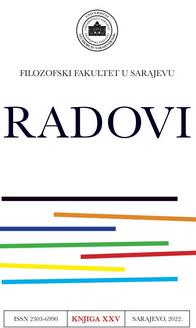PODACI O MARKIRANOSTI LEKSEMA U DVOJEZIČKIM RJEČNICIMA
USAGE LABELS IN BILINGUAL DICTIONARIES
Author(s): Alma Čović-FilipovićSubject(s): Lexis, Comparative Linguistics, South Slavic Languages
Published by: Filozofski fakultet Univerziteta u Sarajevu
Keywords: quasi-equivalence; lexeme markedness; usage labels; bilingual dictionary; death;
Summary/Abstract: The paper examines the issue of indicating lexeme markedness in bilingual dictionaries. Markedness goes beyond the denotative meaning of lexemes and is considered to be the information referring to the lexical knowledge that must be given to the dictionary user in order for their lexical selection to be adequate for the communicative situation they might find themselves in. This information comprises, for example, data on the stylistic, temporal, and regional markedness of lexical units. In the first part of the paper, a theoretical overview of markedness in lexicography is presented. In the empirical part, the lexicographic practice of markedness is investigated using the example of the lexemes from the semantic field TO DIE in the Croatian-German dictionary by Jakić and Hurm (1999). Suggestions for labelling markedness in the Bosnian-German universal dictionary (BNJUR), which is in the process of being created, are proposed as well. The goals of this research are: (1) to determine the representation of pragmatic information at the macrostructural level in the Croatian-German dictionary by Jakić and Hurm (1999); (2) to determine the representation of pragmatic information in the dictionary articles in the form of usage labels and ways of presenting their lexicographic description. Here, it is also important to determine a) for which language elements the label is specified and b) for how many elements the specified label “is valid”; (3) to propose concrete solutions for improving the labelling of pragmatic information in BNJUR, keeping in mind the needs of its target users. The analysis indicated several shortcomings in lexicographic practice, ranging from listing equivalents that are marked differently in relation to the entry, not listing usage labels for marking in general, to ambiguities regarding what the usage labels refer to.
Journal: Radovi Filozofskog fakulteta u Sarajevu
- Issue Year: 25/2022
- Issue No: 1
- Page Range: 111-133
- Page Count: 23
- Language: Bosnian

